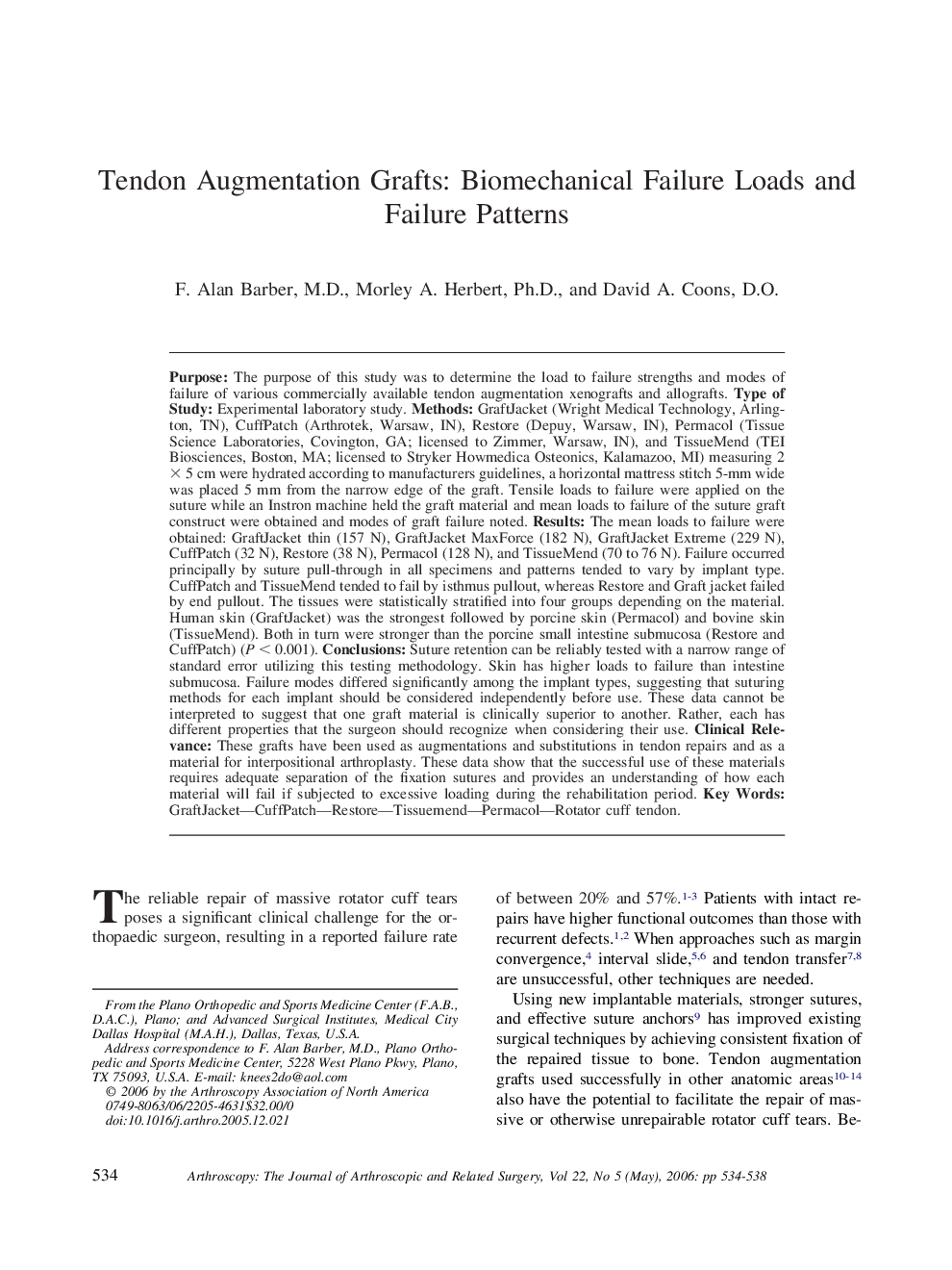| کد مقاله | کد نشریه | سال انتشار | مقاله انگلیسی | نسخه تمام متن |
|---|---|---|---|---|
| 4045800 | 1603611 | 2006 | 5 صفحه PDF | دانلود رایگان |

Purpose: The purpose of this study was to determine the load to failure strengths and modes of failure of various commercially available tendon augmentation xenografts and allografts. Type of Study: Experimental laboratory study. Methods: GraftJacket (Wright Medical Technology, Arlington, TN), CuffPatch (Arthrotek, Warsaw, IN), Restore (Depuy, Warsaw, IN), Permacol (Tissue Science Laboratories, Covington, GA; licensed to Zimmer, Warsaw, IN), and TissueMend (TEI Biosciences, Boston, MA; licensed to Stryker Howmedica Osteonics, Kalamazoo, MI) measuring 2 × 5 cm were hydrated according to manufacturers guidelines, a horizontal mattress stitch 5-mm wide was placed 5 mm from the narrow edge of the graft. Tensile loads to failure were applied on the suture while an Instron machine held the graft material and mean loads to failure of the suture graft construct were obtained and modes of graft failure noted. Results: The mean loads to failure were obtained: GraftJacket thin (157 N), GraftJacket MaxForce (182 N), GraftJacket Extreme (229 N), CuffPatch (32 N), Restore (38 N), Permacol (128 N), and TissueMend (70 to 76 N). Failure occurred principally by suture pull-through in all specimens and patterns tended to vary by implant type. CuffPatch and TissueMend tended to fail by isthmus pullout, whereas Restore and Graft jacket failed by end pullout. The tissues were statistically stratified into four groups depending on the material. Human skin (GraftJacket) was the strongest followed by porcine skin (Permacol) and bovine skin (TissueMend). Both in turn were stronger than the porcine small intestine submucosa (Restore and CuffPatch) (P < 0.001). Conclusions: Suture retention can be reliably tested with a narrow range of standard error utilizing this testing methodology. Skin has higher loads to failure than intestine submucosa. Failure modes differed significantly among the implant types, suggesting that suturing methods for each implant should be considered independently before use. These data cannot be interpreted to suggest that one graft material is clinically superior to another. Rather, each has different properties that the surgeon should recognize when considering their use. Clinical Relevance: These grafts have been used as augmentations and substitutions in tendon repairs and as a material for interpositional arthroplasty. These data show that the successful use of these materials requires adequate separation of the fixation sutures and provides an understanding of how each material will fail if subjected to excessive loading during the rehabilitation period.
Journal: Arthroscopy: The Journal of Arthroscopic & Related Surgery - Volume 22, Issue 5, May 2006, Pages 534–538